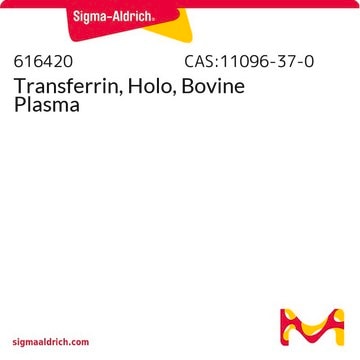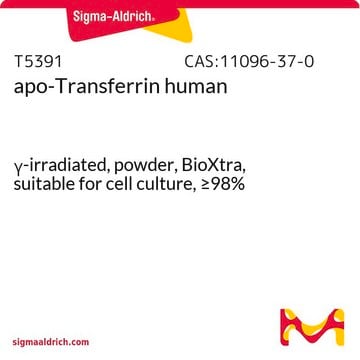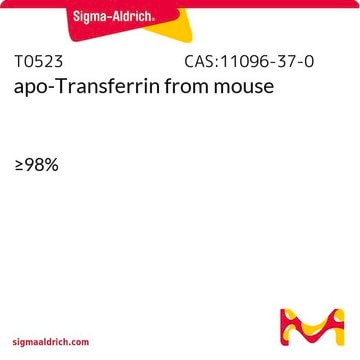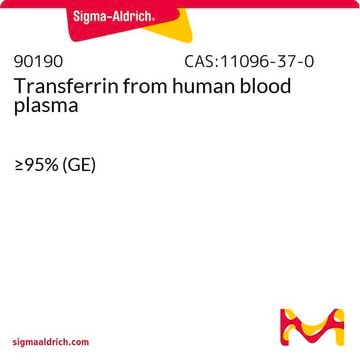T1283
holo-Transferrin bovine
Iron-saturated, BioReagent, suitable for cell culture
Synonym(s):
Siderophilin, Siderophilin, iron-saturated
About This Item
Recommended Products
product line
BioReagent
Assay
97-100% (agarose gel electrophoresis)
form
powder
concentration
~25 mM
technique(s)
cell culture | mammalian: suitable
impurities
endotoxin, tested
solubility
H2O: 50 mg/mL
UniProt accession no.
shipped in
ambient
storage temp.
2-8°C
Gene Information
bovine ... TF(280705)
Looking for similar products? Visit Product Comparison Guide
Application
Analysis Note
Storage Class Code
11 - Combustible Solids
WGK
WGK 3
Flash Point(F)
Not applicable
Flash Point(C)
Not applicable
Personal Protective Equipment
Certificates of Analysis (COA)
Search for Certificates of Analysis (COA) by entering the products Lot/Batch Number. Lot and Batch Numbers can be found on a product’s label following the words ‘Lot’ or ‘Batch’.
Already Own This Product?
Find documentation for the products that you have recently purchased in the Document Library.
Customers Also Viewed
Articles
Understand how transferrin affects serum-free cell culture systems, crucial for biomanufacturing heterologous proteins like monoclonal antibodies.
Understand how transferrin affects serum-free cell culture systems, crucial for biomanufacturing heterologous proteins like monoclonal antibodies.
Understand how transferrin affects serum-free cell culture systems, crucial for biomanufacturing heterologous proteins like monoclonal antibodies.
Understand how transferrin affects serum-free cell culture systems, crucial for biomanufacturing heterologous proteins like monoclonal antibodies.
Our team of scientists has experience in all areas of research including Life Science, Material Science, Chemical Synthesis, Chromatography, Analytical and many others.
Contact Technical Service














